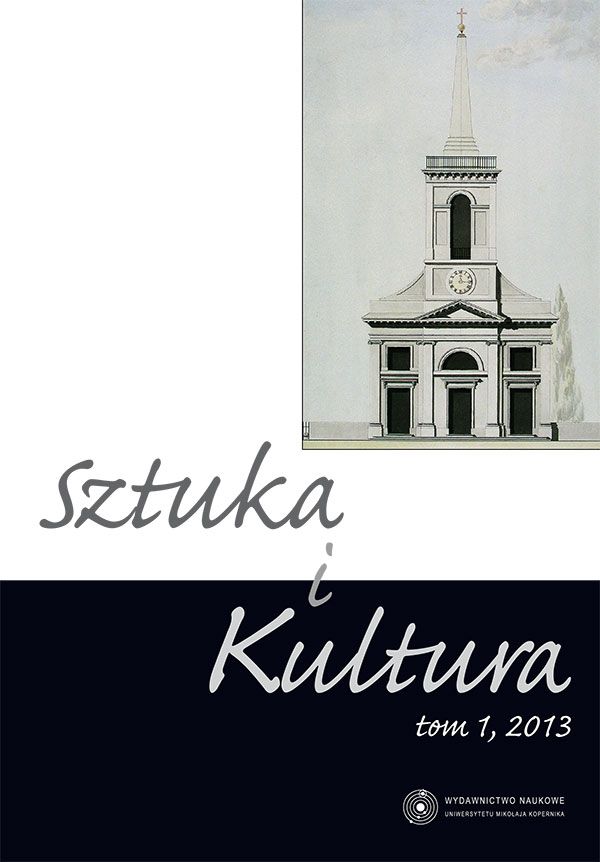‘ Alien city’. City in process
DOI:
https://doi.org/10.12775/SZiK.2013.009Keywords
virtual city, new media, ideal city, cyberspace, nomadic cityAbstract
The phenomenon of a city has been fascinating for ages not only architects and town planners, but also philosophers, sociologists, anthropologists and artists, who see in their transformation processes the reflection of changes taking place in human conditions. These changes’ dynamics intensifies, when a city functions only in virtual space, not having on its disposal a real architectonic tissue. This is the case of an alien city – a virtual city ‘floating’ in cyberspace of http://alien. mur.at/aliencity/index.php, created by Viennese group ‘alien productions’. As Ewa Rewers remarks: „Its Internet address becomes the doorstep […] There is a perspective of computer monitors, windows, which are the pass to ‘the better word’. Searching for ‘a better word’ in the context of a city has its long tradition, expressed in attempts of designing so called ideal cities. In the background of that tradition an alien city can also be perceived in categories of an ideal city. Made in cyberspace, it is an agglomeration meeting the utopian assumption and placed in the Net as postulates of the metropolis authorities. These desiderata touch the problem of society remodeling on the grounds of new ways of life creations, based on liberalization and abolition of all static axes and boundaries. When the ordered projects of Renaissance ideal cities based on harmony, symmetry and statics, not only in architectonic forms but a social system as well, an alien city is a city-process, characterized by constant changeability, fluctuation and imperceptibility. An alien city consists of images of real cities of the world and futuristic views generated by computer, overlapping one another. Visual aspects are completed by sounds, recorded in streets of various metropolises or created by the means of modern techniques. Therefore, it is a metropolis of a hybrid, multilayer character, being created as a result of accumulation of aspects taken from the reality, but also artificially created. Permanent and fixed topography and history does not exist, because every click on its map in the Internet changes its configuration, reorganizing the streets and public buildings’ location. Similar problem concerns its boundaries, which dislocate and remain elusive. An alien city vibrates perpetually, shakes and bustles with changes, but paradoxically it still remains itself, being a monad, in the meaning suggested by Gottfried Wilhelm Leibniz, and also refers to ‘City in space’ by Friedrich Kiesler from 1925. An alien city functions as a dislocated city and its doorstep is not material but virtual as the Internet address. The Renaissance ideal cities were characterized by symmetry, centralization and situating in a carefully selected area, alien city with its monadic, undefined, decentralized and immaterial character is compatible to the spirit of contemporary times and its fluctuation.
Downloads
Published
How to Cite
Issue
Section
Stats
Number of views and downloads: 363
Number of citations: 0



